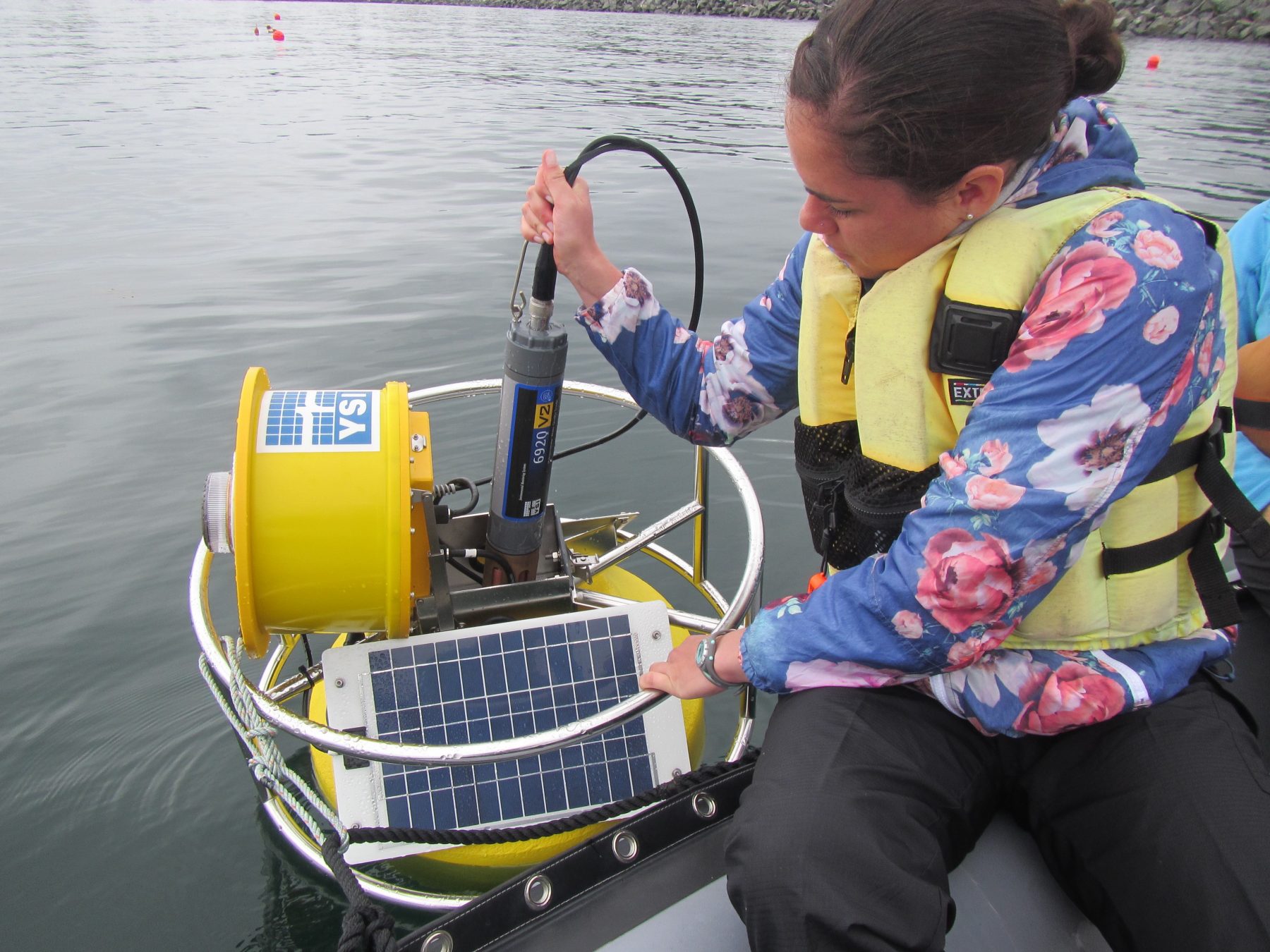
Five permanent sites were established for long-term monitoring – three within existing kelp beds and two in areas without kelp. Kelp canopy cover at each site was measured during high and low tides throughout the summer field season. Global positioning system (GPS) devices were used to record the latitude and longitude of points along the perimeters of the surface canopy to calculate total area.
Temperature (°C) and salinity were continuously monitored with HOBO data loggers deployed at the surface and at the bottom of the water column at each sampling station. Water column profiles were taken at each site visit using vertical casts of a YSI multiparameter water quality sonde. In addition, cadets in 2015 deployed single current meter (S4 InterOcean Systems Inc.) at one kelp site to test the resilience of the instrument for in field conditions in Sitka Sound, and to collect preliminary data on current speed and direction at the study site in the region. Cadets in 2016 configured and deployed a solar-powered YSI-equipped harbor buoy capable of continuous monitoring of temperature, salinity, chlorophyll, dissolved oxygen and pH.

